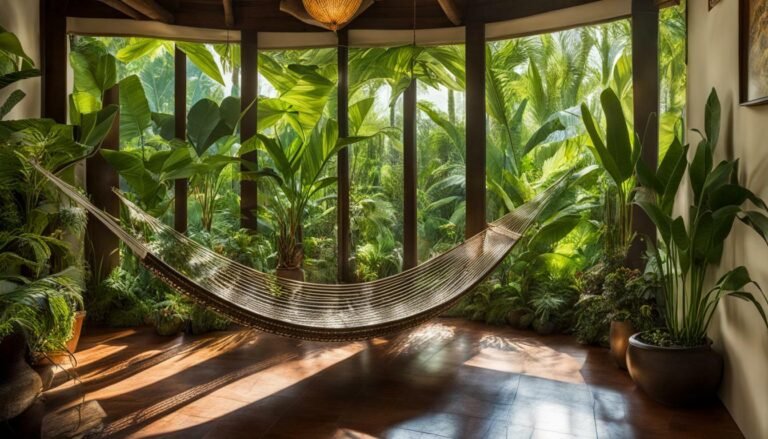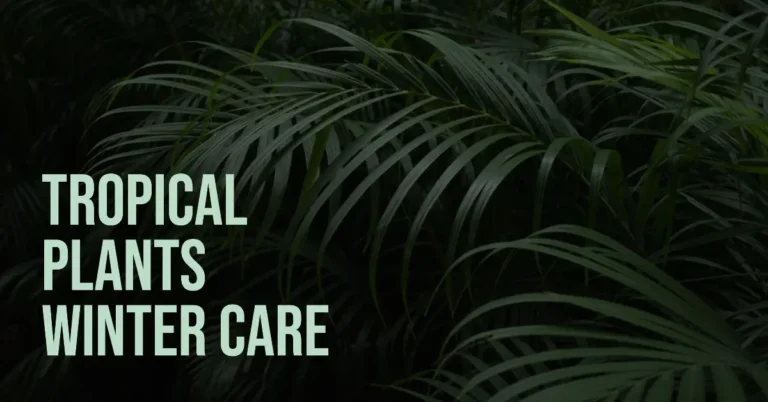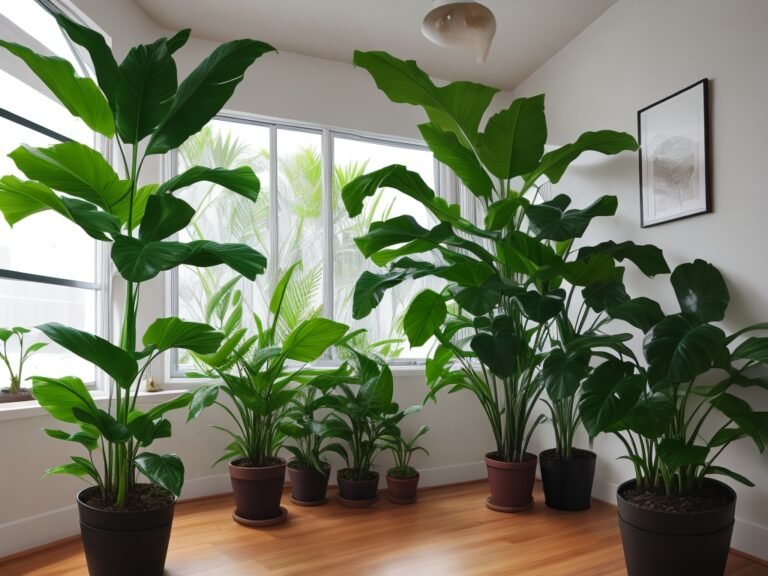Tropical Plant Light Needs: A Comprehensive Guide
Understanding Tropical Plant Light Needs: Your Complete Guide
As a devotee of plant cultivation, I appreciate the unparalleled beauty and exotism that tropical plants can bring to an indoor setting. Their rich diversity not only offers a spectacular display but can elevate the ambiance of any space. Yet, nurturing these plants requires a deep understanding of tropical plant light needs to ensure their vibrancy and health.
Let’s delve deeper into the complexities of tropical plant light needs, unraveling the nuances that will aid you in fostering a thriving indoor garden.

Key Insights into Tropical Plant Light Needs
- Recognizing the light preferences of different tropical plants is pivotal for their well-being.
- Developing an understanding of the varying tropical plant light needs assists in cultivating a vibrant garden.
- Being adept at light management can make a substantial difference in the health of your tropical plants.
Embarking on the Journey of Understanding Tropical Plant Light Needs
Light, a life source for plants, is quintessential in the nurturing of tropical flora. Let us unravel the mysteries of tropical plant light needs in this segment, providing you with the cornerstone information for fostering a lush green space.
The Vital Role of Light in Photosynthesis
Photosynthesis, the biochemical process where plants convert light into energy, stands central to a plant’s growth trajectory. The key to thriving tropical plants lies in mastering the understanding of the quantity and quality of light they need, safeguarding them from the stressors of inadequate or excess light.
Tropical Plant Light Needs and Their Unique Characteristics
Hailing from warm and humid environments, tropical plants have a set of conditions they adore. These plants generally bask in bright, indirect light, dodging direct sunlight to prevent leaf scorching. Delving into the species specificities, we find that plants like orchids and bromeliads gracefully adapt to low-light conditions, showcasing a versatile range in tropical plant light needs.
Indoor vs. Outdoor Tropical Plant Light Needs
Tailoring the lighting conditions according to the indoor or outdoor setting is vital. While indoor tropical plants benefit from artificial lighting supplements, outdoor plants require a keen eye on the daily sunlight received, maneuvering the plant location to match their light preference.
The Lowdown on Tropical Plant Light Needs
Navigating through the spectrum of tropical plant light needs, we find varying requirements that range from low to high light necessities. Let us explore this gradient to facilitate a healthy growth environment for your green companions.
Tropical Plant Light Needs: Categorization Based on Light Intensity
Delving into the heart of tropical plant cultivation, we discern the divergent light requirements that steer their growth. In this section, we aim to equip you with the knowledge to tailor the light settings for different tropical plants, nurturing them to their fullest potential.
Low Light Tropical Plants
Ideal for indoor settings with limited natural light, these plants can sustain in less-than-ideal light conditions, albeit without flourishing to their maximum potential. Let’s glimpse a few stars in this category:
- ZZ Plant
- Snake Plant
- Cast Iron Plant
- Heart-leaf Philodendron
- Chinese Evergreen
These plants embrace bright indirect or artificial lights, showcasing their survival prowess in low light scenarios.
Medium Light Tropical Plants
Requiring a notch higher light level than their low-light counterparts, these plants love basking in bright, indirect light or partial shade. Here are some popular choices:
- Bird of Paradise
- Bromeliads
- Calathea
- Fiddle Leaf Fig
- Pothos
Positioning near windows that invite a good amount of natural light can be a haven for these plants.
High Light Tropical Plants
Craving full sun or intense direct light, these tropical entities are perfect candidates for outdoor placements with ample sunlight access. The stars of this category are:
- Hibiscus
- Bougainvillea
- Plumeria
- Croton
- Palm Trees
Their growth thrives with natural light, absorbing the golden rays to their heart’s content.
Specific Tropical Plants and Their Light Needs
Orchids
Orchids are known for their beautiful and delicate blooms, but they can be quite finicky when it comes to light. Most orchids require bright, indirect light to thrive. Direct sunlight can scorch their leaves and flowers, so it’s best to place them near a window with filtered light. Some orchids, such as Phalaenopsis, can tolerate lower light levels, but they may not bloom as frequently.
Monstera Deliciosa
Monstera Deliciosa, also known as the Swiss Cheese Plant, is a popular tropical plant with large, glossy leaves. These plants prefer bright, indirect light, but they can also tolerate lower light levels. Direct sunlight can burn their leaves, so it’s best to place them near a window with filtered light. Monstera Deliciosa can also benefit from occasional misting to increase humidity levels.
ZZ Plant
ZZ Plant, also known as Zamioculcas zamiifolia, is a low-maintenance tropical plant that can thrive in a variety of light conditions. These plants can tolerate low to bright, indirect light, making them a great choice for offices or rooms with limited natural light. ZZ Plants can also withstand periods of drought, making them an ideal choice for forgetful plant parents.
Snake Plant
Snake Plant, also known as Sansevieria, is another low-maintenance tropical plant that can tolerate a range of light conditions. These plants can survive in low to bright, indirect light, but they may not grow as quickly or produce as many leaves in lower light. Snake Plants are also great air purifiers, making them popular for bedrooms or other areas where air quality is a concern.
Peace Lily
Peace Lily, also known as Spathiphyllum, is a tropical plant with dark green leaves and white flowers. These plants prefer bright, indirect light, but they can also tolerate lower light levels. Direct sunlight can scorch their leaves, so it’s best to place them near a window with filtered light. Peace Lilies are also sensitive to overwatering, so be sure to let the soil dry out slightly between waterings.
Chinese Evergreen
Chinese Evergreen, also known as Aglaonema, is a tropical plant with variegated leaves in shades of green, silver, and pink. These plants prefer bright, indirect light, but they can also tolerate lower light levels. Direct sunlight can burn their leaves, so it’s best to place them near a window with filtered light. Chinese Evergreen can also benefit from occasional misting to increase humidity levels.
Rubber Plant
Rubber Plant, also known as Ficus elastica, is a tropical plant with large, glossy leaves. These plants prefer bright, indirect light, but they can also tolerate lower light levels. Direct sunlight can scorch their leaves, so it’s best to place them near a window with filtered light. Rubber Plants can also benefit from occasional misting to increase humidity levels.
Bromeliads
Bromeliads are a family of tropical plants with colorful leaves and unique flowers. These plants prefer bright, indirect light, but they can also tolerate lower light levels. Direct sunlight can scorch their leaves, so it’s best to place them near a window with filtered light. Bromeliads can also benefit from occasional misting to increase humidity levels.
Spider Plant
Spider Plant, also known as Chlorophytum comosum, is a low-maintenance tropical plant with long, narrow leaves. These plants prefer bright, indirect light, but they can also tolerate lower light levels. Spider Plants can also benefit from occasional misting to increase humidity levels.
Croton
Croton is a tropical plant with colorful, variegated leaves. These plants prefer bright, indirect light, but they can also tolerate lower light levels. Direct sunlight can scorch their leaves, so it’s best to place them near a window with filtered light. Crotons can also benefit from occasional misting to increase humidity levels.
Christmas Cactus
Christmas Cactus, also known as Schlumbergera, is a tropical plant with colorful, tubular flowers. These plants prefer bright, indirect light, but they can also tolerate lower light levels. Direct sunlight can scorch their leaves, so it’s best to place them near a window with filtered light. Christmas Cactus can also benefit from occasional misting to increase humidity levels.
Ponytail Palm
Ponytail Palm, also known as Beaucarnea recurvata, is a tropical plant with long, thin leaves and a bulbous trunk. These plants prefer bright, indirect light, but they can also tolerate lower light levels. Direct sunlight can scorch their leaves, so it’s best to place them near a window with filtered light. Ponytail Palms can also withstand periods of drought, making them an ideal choice for forgetful plant
Care Tips for Light Management
Managing Light Exposure
As a tropical plant enthusiast, I know that proper light exposure is crucial for the growth and health of your plants. Some tropical plants require bright, direct sunlight, while others prefer indirect or filtered light. It is essential to understand the light needs of your plants to provide them with the right amount of light.
If you have a south-facing window, it is an excellent spot for your tropical plants that require bright, direct sunlight. However, if you do not have access to a south-facing window, you can use artificial grow lights to provide the required light intensity. Keep in mind that too much direct sunlight can cause sunburn and damage to your plants, so it is essential to monitor their light exposure.
Temperature and Humidity Management
Tropical plants thrive in warm and humid environments. It is essential to maintain a consistent temperature and humidity level to keep your plants healthy. You can use a humidifier or mist your plants regularly to increase the humidity level. Additionally, you can place a tray of water near your plants to increase the humidity level.
It is also crucial to avoid exposing your plants to extreme temperature changes. Keep your plants away from drafts and air conditioning vents. If you live in a cold climate, you may need to use a greenhouse or a heating pad to maintain the appropriate temperature for your plants.
Choosing the Right Grow Lights
If you do not have access to a south-facing window, you can use grow lights to provide the required light intensity for your tropical plants. When choosing grow lights, it is essential to consider the light spectrum and intensity.
Tropical plants require a full spectrum of light, including blue and red wavelengths. LED grow lights are an excellent option as they provide the full spectrum of light and are energy-efficient. Additionally, you can adjust the light intensity and duration to meet the specific light needs of your plants.
Recognizing and Responding to Light Deficiency
If your tropical plants are not getting enough light, they may exhibit signs of light deficiency, such as yellow leaves or slow growth. If you notice these signs, you can adjust the light exposure by moving your plants closer to a light source or increasing the duration of light exposure.
It is essential to monitor your plants regularly to ensure they are getting the right amount of light. ensuring your tropical plant thriveslight needs, so it may take some trial and error to find the right balance of light exposure.
In summary, managing light exposure, temperature, and humidity levels, choosing the right grow lights, and recognizing and responding to light deficiency are crucial for the growth and health of your tropical plants. By following these care tips, you can create a healthy and thriving environment for your plants.
Soil and Watering Requirements
Understanding Soil Types
As a tropical plant owner, it is important to understand the type of soil your plant needs to thrive. Tropical plants require well-draining soil to prevent root rot. A good potting mix for tropical plants should contain a combination of peat moss, perlite, and vermiculite. These materials provide the necessary nutrients and aeration for your plant to grow healthy roots.
Proper Watering Techniques
Watering your tropical plant correctly is essential for its survival. Overwatering can lead to root rot, while underwatering can cause your plant to wilt and die. The key to proper watering is to maintain consistent soil moisture.
To water your tropical plant, pour water into the soil until it drains out of the drainage holes. This ensures that the entire soil mass is wet. Avoid watering your plant too frequently, as this can lead to waterlogged soil and root rot. Instead, allow the soil to dry out slightly before watering again.
Avoiding Root Rot
Root rot is a common problem among tropical plants, and it can be caused by overwatering or poorly draining soil. To avoid root rot, make sure your plant is in a pot with drainage holes and use a well-draining potting mix.
If you suspect your plant has root rot, remove it from its pot and inspect the roots. Healthy roots should be white and firm, while rotted roots will be brown and mushy. Cut away any rotted roots and repot your plant in fresh soil.
Remember, maintaining proper soil moisture and using a well-draining potting mix are the keys to preventing root rot and ensuring your tropical plant thrives.
FAQs
What are the light requirements for tropical plants?
Tropical plants require bright, indirect light to thrive. They are native to warm, humid environments with plenty of sunlight, so it’s important to mimic these conditions as closely as possible. However, direct sunlight can be too intense and can scorch the leaves of tropical plants.
How much light should I give my tropical plants?
Tropical plants need at least 6 hours of bright, indirect light per day. Some plants may require more, while others can tolerate less. It’s important to research the specific light requirements of each plant you own to ensure they are getting the right amount of light.
Can tropical plants survive in low light conditions?
While some tropical plants can survive in low light conditions, they will not thrive. Plants that do not receive enough light may become leggy, lose their vibrant colors, and stop growing altogether. If you want your tropical plants to thrive, it’s important to provide them with adequate light.
What types of light are best for tropical plants?
Tropical plants do best with bright, indirect light. This can be achieved through natural light from a window or artificial light from grow lights. Full spectrum grow lights are the best option for tropical plants, as they provide a wide range of wavelengths that mimic natural sunlight.
How do I know if my tropical plants are getting enough light?
If your tropical plants are getting enough light, they will have vibrant colors and healthy growth. If they are not getting enough light, they may become leggy, lose their color, and stop growing. It’s important to monitor your plants and adjust their lighting as needed.
Do I need to provide additional lighting for my indoor tropical plants?
If your tropical plants are not getting enough natural light, you may need to provide additional lighting. Full spectrum grow lights are the best option for indoor tropical plants, as they provide the right wavelengths of light for optimal growth. Be sure to research the specific lighting needs of each plant you own to ensure they are getting the right amount of light.







